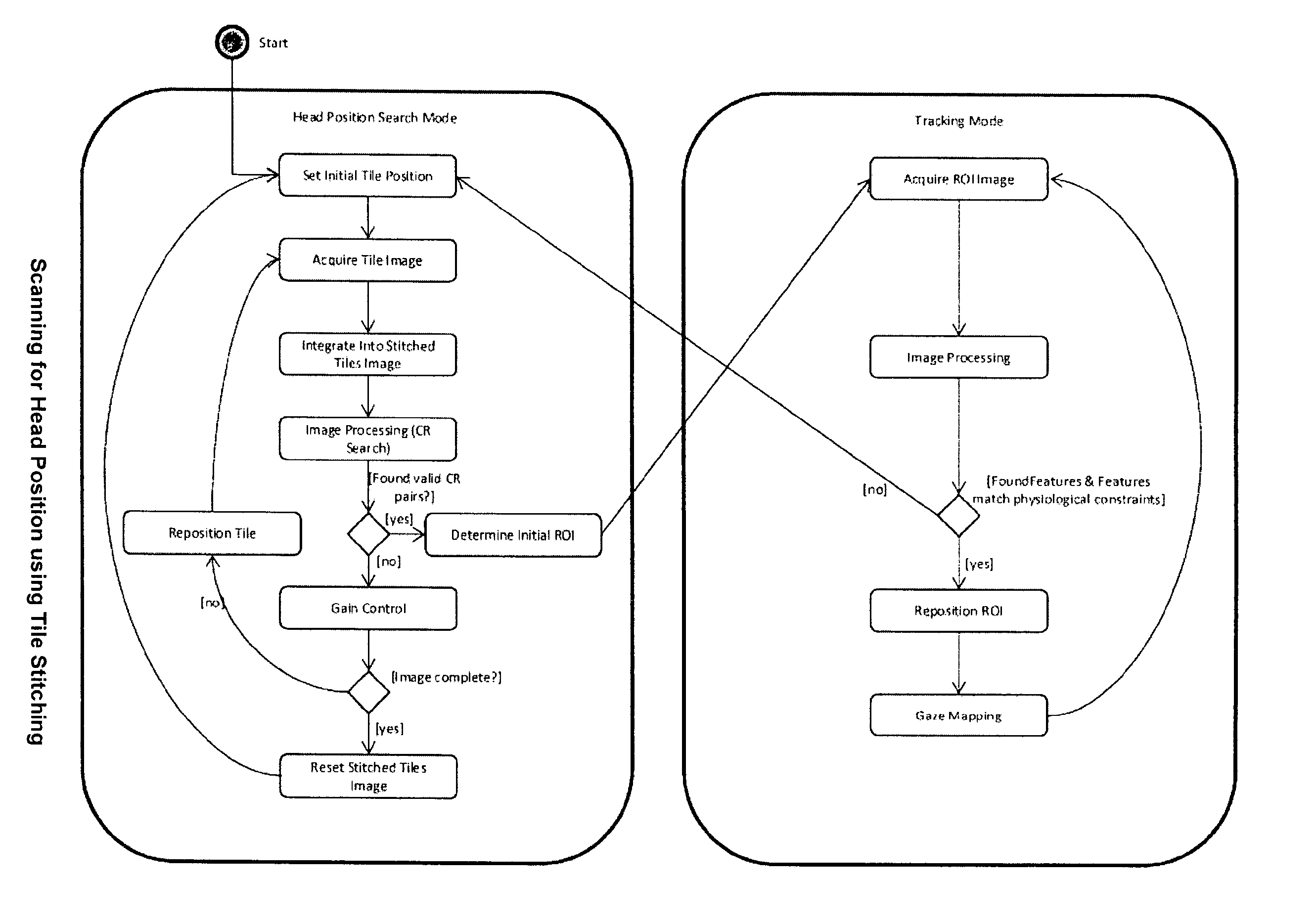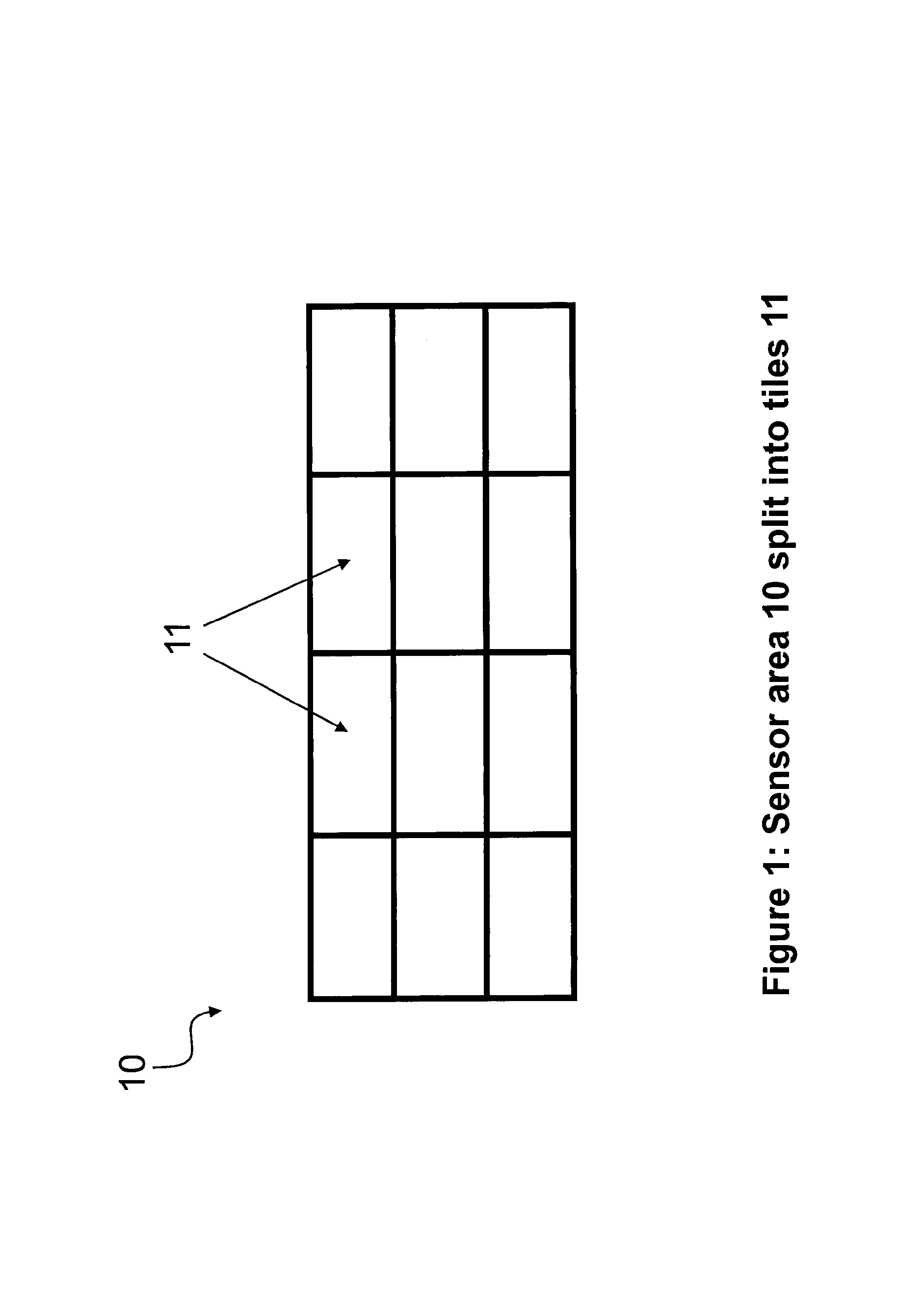Tiled image based scanning for head position for eye and gaze tracking
a technology of eye and gaze tracking and scanning for head position, which is applied in the field of eye gaze tracking, can solve the problems of inability to provide permanent full spatial resolution image acquisition, high sampling rate of eye tracking applications, and inability to speed up the initial read out of full frame,
- Summary
- Abstract
- Description
- Claims
- Application Information
AI Technical Summary
Benefits of technology
Problems solved by technology
Method used
Image
Examples
embodiment 1
[0142]2) The embodiment 1), which may or may not include one or more light emitting elements
[0143]3) The embodiment 1-2 where some form of resolution reduction, such as binning or skipping or sub-sampling may or may not be used according to a horizontal or vertical or combined horizontal and vertical pattern to selectively reduce the number of pixels being transmitted or processed
[0144]4) The embodiment 1-3, where the search method tries to substantially locate or identify at least part of at least one said feature within the (sub)set of light sensitive element or ROI defined by a partial readout occurred within a given sampling interval
[0145]5) The embodiment 1-4, where the size and shape of the ROI can be set to constant values
[0146]6) The embodiment 1-5, where the size and shape of the ROI can be dynamically changed at different time periods
[0147]7) The embodiments 1-6, where the searching method consists in stitching or combining within a processing unit's memory one or more of ...
embodiment 8
[0149]9) The embodiment 8, where physiological and geometrical constraints are applied to features stored in the Feature Accumulator to exclude false positive detections, to reconstruct a feature's complete shape from one or more partial fragments, and to use said together with said model to substantially determine a user's head position and / or orientation and / or one or more eyes position(s) and / or orientations
embodiment 9
[0150]10) The embodiment 9, where time of detection of one or more said features can be used to determine a confidence value to features which may be used to privilege newer features compared to older features from the same area or ROI
[0151]11) The previous embodiments, where time of detection of features can be used to determine movement velocity of one or more heads or one or more eyes and said velocity(ies) can be used to track and / or predict head(s) and eye(s) positions at future time intervals, where said prediction can be used to determine future location(s) of said ROI(s)
[0152]12) The previous embodiments, where the position of one or more ROIs can be defined statically:[0153]a) In the middle of the sensor[0154]b) At a corner of the sensor[0155]c) At a position with a high probability of finding the head position. Probability depends on head position statistics that has been created offline.
[0156]13) The previous embodiments, where the position of one or more ROIs can be defi...
PUM
 Login to View More
Login to View More Abstract
Description
Claims
Application Information
 Login to View More
Login to View More - R&D
- Intellectual Property
- Life Sciences
- Materials
- Tech Scout
- Unparalleled Data Quality
- Higher Quality Content
- 60% Fewer Hallucinations
Browse by: Latest US Patents, China's latest patents, Technical Efficacy Thesaurus, Application Domain, Technology Topic, Popular Technical Reports.
© 2025 PatSnap. All rights reserved.Legal|Privacy policy|Modern Slavery Act Transparency Statement|Sitemap|About US| Contact US: help@patsnap.com



